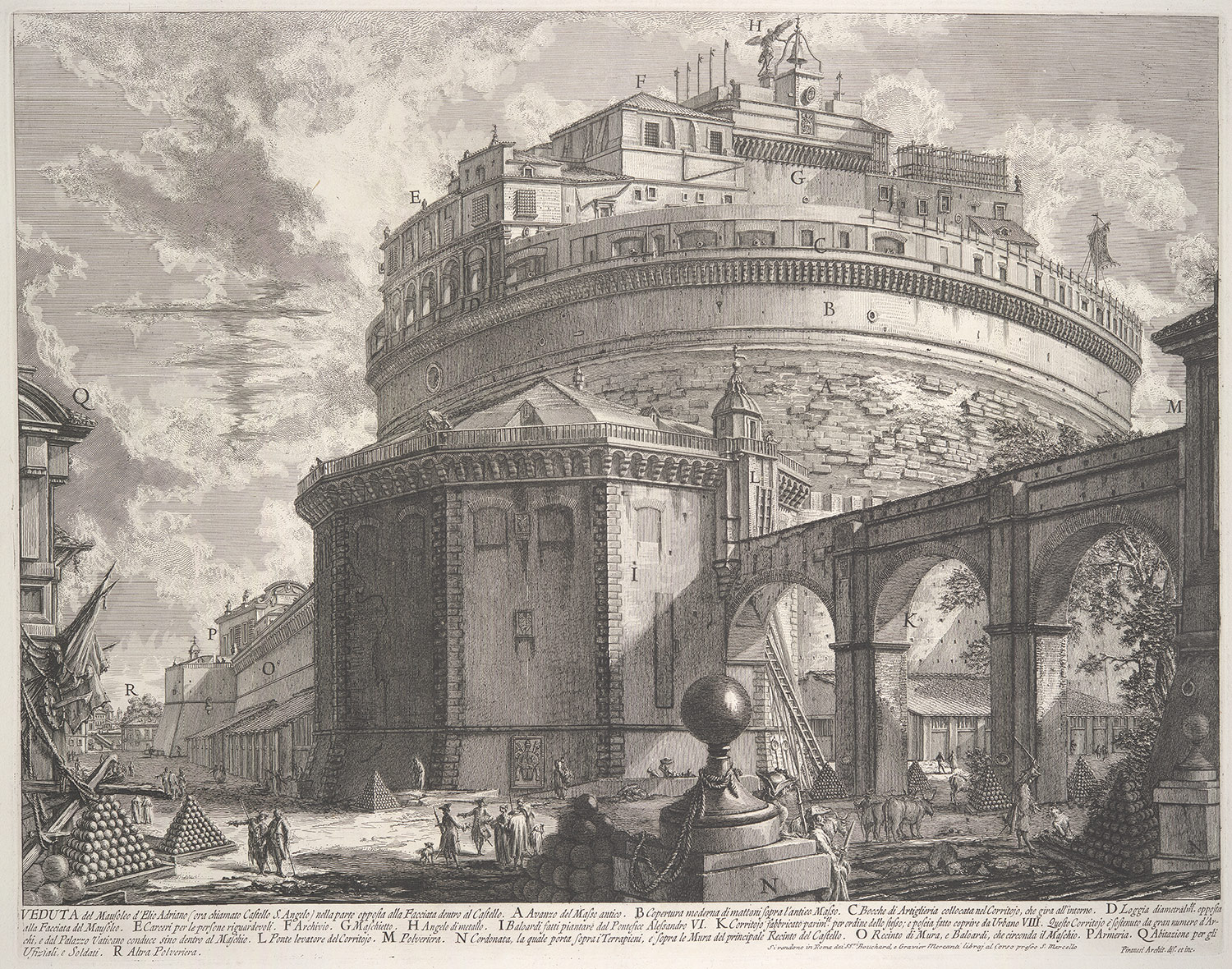


Veduta del Mausoleo d'Elio Adraiano,
ora chiamato Castello S. Angelo (View of the Mausoleum of Hadrian, now called
the Castel S. Angelo): From Vedute di Roma (Views of
Rome), ca. 1756
Giovanni Battista Piranesi (Italian, 1720–1778)
Etching, undescribed first state with address of Bouchard
Giovanni Battista Piranesi (Italian, 1720–1778)
Etching, undescribed first state with address of Bouchard
The Elisha Whittelsey Collection, The
Elisha Whittelsey Fund, 1955 (55.567.6)
Piranesi's
earliest views of Rome, such as the Piazza del Popolo (37.45.3.49), had placed the principal
buildings at the back of a vast, tilted space, filled with a diversity of human
activity. By the mid-1750s, the monuments fill the space more commandingly, and
are seen as if from below and close at hand, as in this view of the Castel
Sant'Angelo. Piranesi produced this view at the same time he was working on the
Antichità Romane (41.71.1.3.49; 41.71.1.3.53), his four-volume archaeological treatise,
and it may have been originally intended for that work. The clear didactic
character of the image and the type of lettering are characteristic of the Antichità Romane, although the dramatic view of the castle as
it appeared in the eighteenth century is entirely in keeping with the other Vedute. The buildings at the top of the structure served as a
gracious and well-fortified refuge for the pope in times of trouble—the corridor
that stretches to the right atop huge arches leads all the way to the Vatican
Palace.





No comments:
Post a Comment